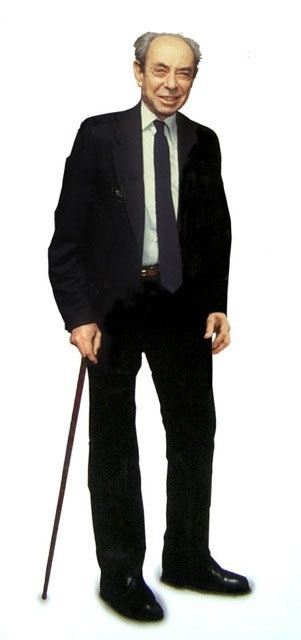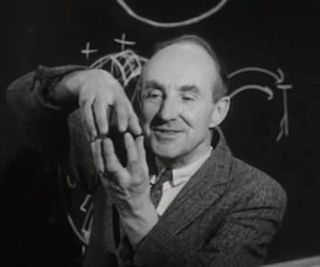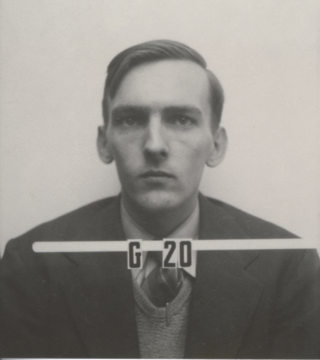
The Technion – Israel Institute of Technology is a public research university located in Haifa, Israel. Established in 1912 by Jews under the dominion of the Ottoman Empire, the Technion is the oldest university in the country.

Dudley Robert Herschbach is an American chemist at Harvard University. He won the 1986 Nobel Prize in Chemistry jointly with Yuan T. Lee and John C. Polanyi "for their contributions concerning the dynamics of chemical elementary processes". Herschbach and Lee specifically worked with molecular beams, performing crossed molecular beam experiments that enabled a detailed molecular-level understanding of many elementary reaction processes. Herschbach is a member of the Board of Sponsors of the Bulletin of the Atomic Scientists.

John Clarke Slater was an American physicist who advanced the theory of the electronic structure of atoms, molecules and solids. He also made major contributions to microwave electronics. He received a B.S. in physics from the University of Rochester in 1920 and a Ph.D. in physics from Harvard in 1923, then did post-doctoral work at the universities of Cambridge (briefly) and Copenhagen. On his return to the U.S. he joined the physics department at Harvard.

Ali Javan ; December 26, 1926 – September 12, 2016) was an Iranian American physicist and inventor. He was the first to propose the concept of the gas laser in 1959 at the Bell Telephone Laboratories. A successful prototype, constructed by him in collaboration with W. R. Bennett, Jr., and D. R. Herriott, was demonstrated in 1960. His other contributions to science have been in the fields of quantum physics and spectroscopy.

Frank Friedman Oppenheimer was an American particle physicist, cattle rancher, professor of physics at the University of Colorado, and the founder of the Exploratorium in San Francisco.

Richard Leacock was a British-born documentary film director and one of the pioneers of direct cinema and cinéma vérité.
Arthur Robert von Hippel was a German American materials scientist and physicist. Von Hippel was a pioneer in the study of dielectrics, ferromagnetic and ferroelectric materials, and semiconductors and was a codeveloper of radar during World War II.
Physics education or physics teaching refers to the education methods currently used to teach physics. The occupation is called physics educator or physics teacher. Physics education research refers to an area of pedagogical research that seeks to improve those methods. Historically, physics has been taught at the high school and college level primarily by the lecture method together with laboratory exercises aimed at verifying concepts taught in the lectures. These concepts are better understood when lectures are accompanied with demonstration, hand-on experiments, and questions that require students to ponder what will happen in an experiment and why. Students who participate in active learning for example with hands-on experiments learn through self-discovery. By trial and error they learn to change their preconceptions about phenomena in physics and discover the underlying concepts. Physics education is part of the broader area of science education.

Jerrold Reinach Zacharias was an American physicist and institute professor at the Massachusetts Institute of Technology, as well as an education reformer. His scientific work was in the area of nuclear physics.
Gregory Scott Boebinger was the director of the National High Magnetic Field Laboratory in Tallahassee, Florida, and is currently a professor of physics at Florida State University.
The MIT School of Science is one of the five schools of the Massachusetts Institute of Technology, located in Cambridge, Massachusetts, United States. The School is composed of 6 academic departments who grant SB, SM, and PhD or ScD degrees; as well as a number of affiliated laboratories and centers. As of 2020, the Dean of Science is Professor Nergis Mavalvala. With approximately 275 faculty members, 1100 graduate students, 700 undergraduate majors, 500 postdocs, and 400 research staff, the School is the second largest at MIT. As of 2019, 12 faculty members and 14 alumni of the School have won Nobel Prizes.
The Berkeley Physics Course is a series of college-level physics textbooks written mostly by UC Berkeley professors.

Eric M. Rogers was a British writer and physics educator. He is perhaps best known for his 1960 textbook Physics for the Inquiring Mind. The book, subtitled The Methods, Nature, and Philosophy of Physical Science, was based on courses he gave at Princeton University, where he taught from 1942 to 1971. Rogers also headed the Nuffield Science Teaching Project programme in physics education in the 1960s.
Harry Eugene Stanley is an American physicist and University Professor at Boston University. He has made seminal contributions to statistical physics and is one of the pioneers of interdisciplinary science. His current research focuses on understanding the anomalous behavior of liquid water, but he had made fundamental contributions to complex systems, such as quantifying correlations among the constituents of the Alzheimer brain, and quantifying fluctuations in noncoding and coding DNA sequences, interbeat intervals of the healthy and diseased heart. He is one of the founding fathers of econophysics.

Matthew Linzee Sands was an American physicist and educator best known as a co-author of the Feynman Lectures on Physics. A graduate of Rice University, Sands served with the Naval Ordnance Laboratory and the Manhattan Project's Los Alamos Laboratory during World War II.
Frames of Reference is a 1960 black-and-white educational film directed by Richard Leacock, written and presented by Patterson Hume and Donald Ivey, and produced for the Physical Science Study Committee.

Richard Edward Taylor,, was a Canadian physicist and Stanford University professor. He shared the 1990 Nobel Prize in Physics with Jerome Friedman and Henry Kendall "for their pioneering investigations concerning deep inelastic scattering of electrons on protons and bound neutrons, which have been of essential importance for the development of the quark model in particle physics."
John Gordon King (1925–2014) was an English-born American physicist who was the Francis Friedman Professor of Physics (emeritus) at the Massachusetts Institute of Technology, the former director of MIT’s Molecular Beam Laboratory, and the former associate director of MIT’s Research Laboratory of Electronics.
Francis Lee Friedman was a professor of physics at the Massachusetts Institute of Technology (MIT).
Arthur Kent Kerman was a Canadian-American nuclear physicist, a fellow of the American Physical Society, Fellow of the American Academy of Arts and Sciences, and Fellow of the New York Academy of Sciences. He was a professor emeritus of physics at Massachusetts Institute of Technology’s Center for Theoretical Physics (CTP) and Laboratory for Nuclear Science He was known for his work on the theory of the structure of nuclei and on the theory of nuclear reactions.








